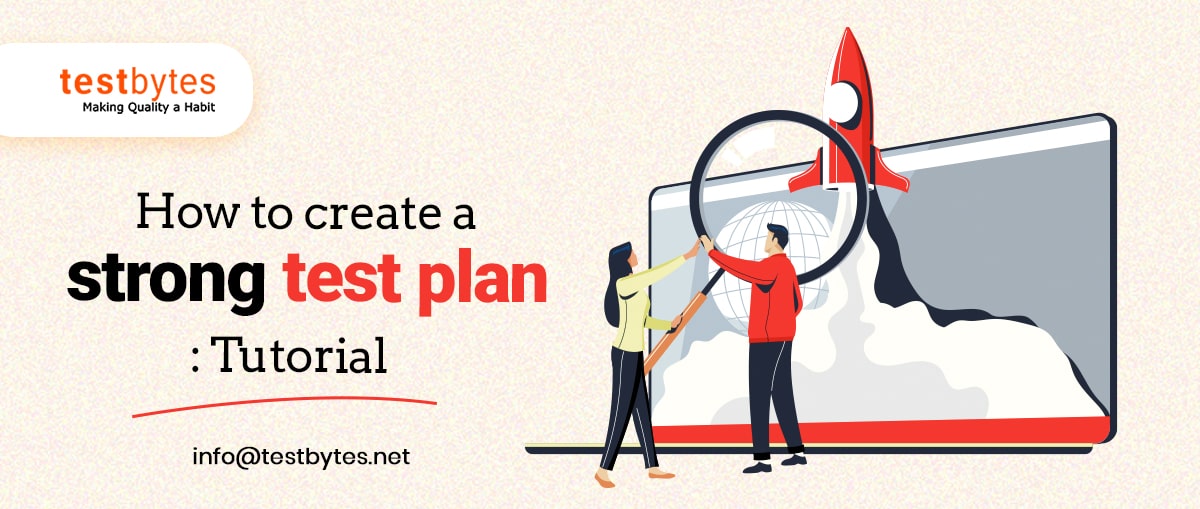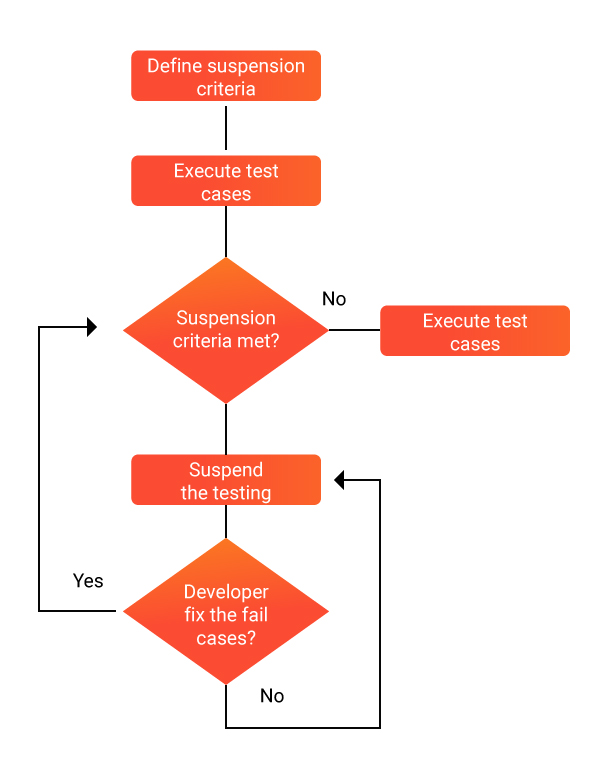

Tuesday January 11, 2022

The test plan is a blueprint that specifies the software testing activities as a defined process that is monitored from time to time and controlled by the test managers.
A test plan is written by a test member who understands the functionality and working of the system well, and each test case is submitted for review by seniors.
Importance of test plans
Test plan helps us understand and determine the effort required to validate the system and the quality of the application under various tests.
The test plan document also helps other developers and business managers to understand the details of the tests.
It acts as a rule book that guides us and allows us to follow the standards. The management team can review and re-use the plan for test estimation, scope, test strategy, etc.
So how do we go about creating the test plan for any software?
Let’s discuss step-by-step the process by following the eight steps below:
Step-by-step process
Let’s dive into the step-by-step tutorial of How To Create a Test Plan
Step1. Product Analysis
Can you create a test plan without any information about the software and its products? The answer is NO. Studying the requirements and analyzing the system is necessary even before you start creating the plan.
Analyzing the reviewing the website and product documentation is another basic part of product analysis. The product documentation can give you a deep insight into the features of the software product and its working. Sometimes interviewing the owners, end-users, developers can also help you understand the product in a better way and hence leading to successful test Plan creation.
You should be researching about the client, its end users, their needs and expectations, and what the product should deliver. Ask yourself these questions when you analyze,
– What is the system intended to be?
– What is its use?
– Who and how will it work?
– What will be the development requirements?
If in case you or the team is unclear about any requirement of the system, you can interview the client and its concerned people and get more detailed information.

Step 2. Designing test strategy
Definitely, the scope of the testing is very important. To put it in simple words know what you need to test and what you don’t need to test. All the components that need to be tested can be put under “in scope” and the rest can be defined as “out of scope”.
It helps
But the main question that arises here is how would you know that what needs to be “in scope” and what needs to be in “out of scope”
There are few points that you need to keep in mind while defining the scope of the test
Step 3. Identifying the Testing Type, which testing should happen
Know since you know what you have to test and what you don’t, you should also know which types of testing you have to perform. Since there are many different types of testing that can be conducted on any software product, you should be able to clearly define the testing type that is required for your software under test. You can prioritize which Testing Types are important to be carried out.
You can consider the budget of the project, the time limitations, and your expertise to prioritize the testing type.
Step 4. Interpret test objectives
Defining the test objectives should be the ultimate goal of achieving the test executions. The main goal of testing is to find as many software bugs as possible, to ensure that the software is free from all the bugs. To interpret and document the test objective, you will need to follow 2 steps;
1. List down all the features and functionality of the system including its performance and user interface.
2. Identify the target or the end result based on the above features.
Step 5. Outline test criteria
The test criteria are a rule or a standard on which the test procedure is based. 2 types of test criteria need to be resolved:
1. Suspension Criteria: Here you specify the critical suspension criteria for a test. When the suspension criteria are met, the active test cycle is suspended.
2. Exit Criteria: Exit criteria specify a successful completion of a test phase.
Exit Criteria

For example, your exit criteria can be if 95% of all the test passes pass, you can consider the test phase to be complete.
Run rate and pass rate are two prominent ways to define exit criteria
Run rate = a number of test cases executed/total test cases of the test specification.
Pass rate = numbers of test cases passed / test cases executed.
These are retrieved from Test Metric documents.
The majorly Run rate has to be 100%. The exception can be considered in case a clear and eligible reason is mentioned for a lower run rate.
The pass rate can be variable depending on project scope. But certainly, a higher pass rate is always a desirable goal.
Step 6. Planning Resources
As the name suggests, planning resources are the task of having a detailed summary of all the resources required to execute the project. Resources can include anything from people, hardware and software resources, or any other materials to be used.
Resource planning is indeed important as it specifies all the resources that will be required to run the project successfully. This will help the test manager to make a correct schedule and define accurate estimations needed to run the project.
| No. | Member | Tasks |
| 1 | Test Manager | 1. Manages the whole project 2. Directs the team 3. Hire required and efficient resources |
| 2 | Tester | 1. Identifies test techniques/tools/automation architecture 2. Creates test plans. 3. Run the tests. 4. Log results. 5. Report the defects. |
| 3 | Developer in Test | Carry out test cases, test suite, etc. |
| 4 | Test Administrator | 1. Creates and manages Test Environment and its assets 2. Help Tester to use a test environment |
Some of the system resources you should look for are
Step 7. Define test Environment
The test environment is nothing but the combination of hardware and software on which the test team is going to execute the test cases. The test environment is a real-time instance that includes the user and the physical environment which includes servers and front-end interface.
Step 8. Create Test Logistics
The two major points you will have to consider while creating test Logistics are:
Who will test?
Analyze your team member’s capabilities and skills and assign the apt tasks to them based on their skills. You should be aware which Testing is to be performed by which tester and their skill set.
When will the test occur?
You should be strict on the timeliness to avoid any delays and all testing activities should have their set time.
Step 9. Document Risk & Issues
Risks in the future result in issues. So it is better to know the risks well in advance and to document clearly to avoid any issues during the later stages.
| Risk | Mitigation |
| Skill lack in the team members | Arrange training for them |
| Short deadlines, not enough time for resting activities | Prioritize testing. |
| Team members lack management skills | Plan leadership training |
| The corporation is missing among team members | Encourage corporation among team members also Plan corporation based activities |
| You are going over budget | Setting Test scope is your biggest help here |
Step 10. Outline Test Criteria
Suspension Criteria
Let’s say for instance if your team is getting 40% failed test cases, you can suspend the testing until all the fixes are done by the development team.

Step 11. Estimation and Scheduling
In the test environment phase, the test manager has already used techniques to come to the conclusion of estimating the project. Now along with the estimate, it’s necessary you bind to the schedule of test planning.
Many IT firms break down the development into small tasks and add estimation of each task. Also, to have a proper estimation to execute test cases, the test manager needs various inputs like employee and project deadline, project estimation, and project risk.
Step 12. Govern test deliverables
Finally, the test deliverables consist of all the documents, components, and tools that have been developed in support of the various testing efforts carried out by the team.
Many times, the manager decides to give the deliverables at specified intervals of the development.
The test deliverables include plan documents, design specifications, simulators, error and execution logs, installation and test procedures, etc.
What’s the difference between a test plan and a test strategy?

Test Plan document example

Conclusion:
The above steps for creating a test plan may differ depending on the project requirements and scope. Remember, your company should come up with its own set of guidelines and procedures while conducting test procedures. Now sit back and that a breath of relief. Get started on your testing work!